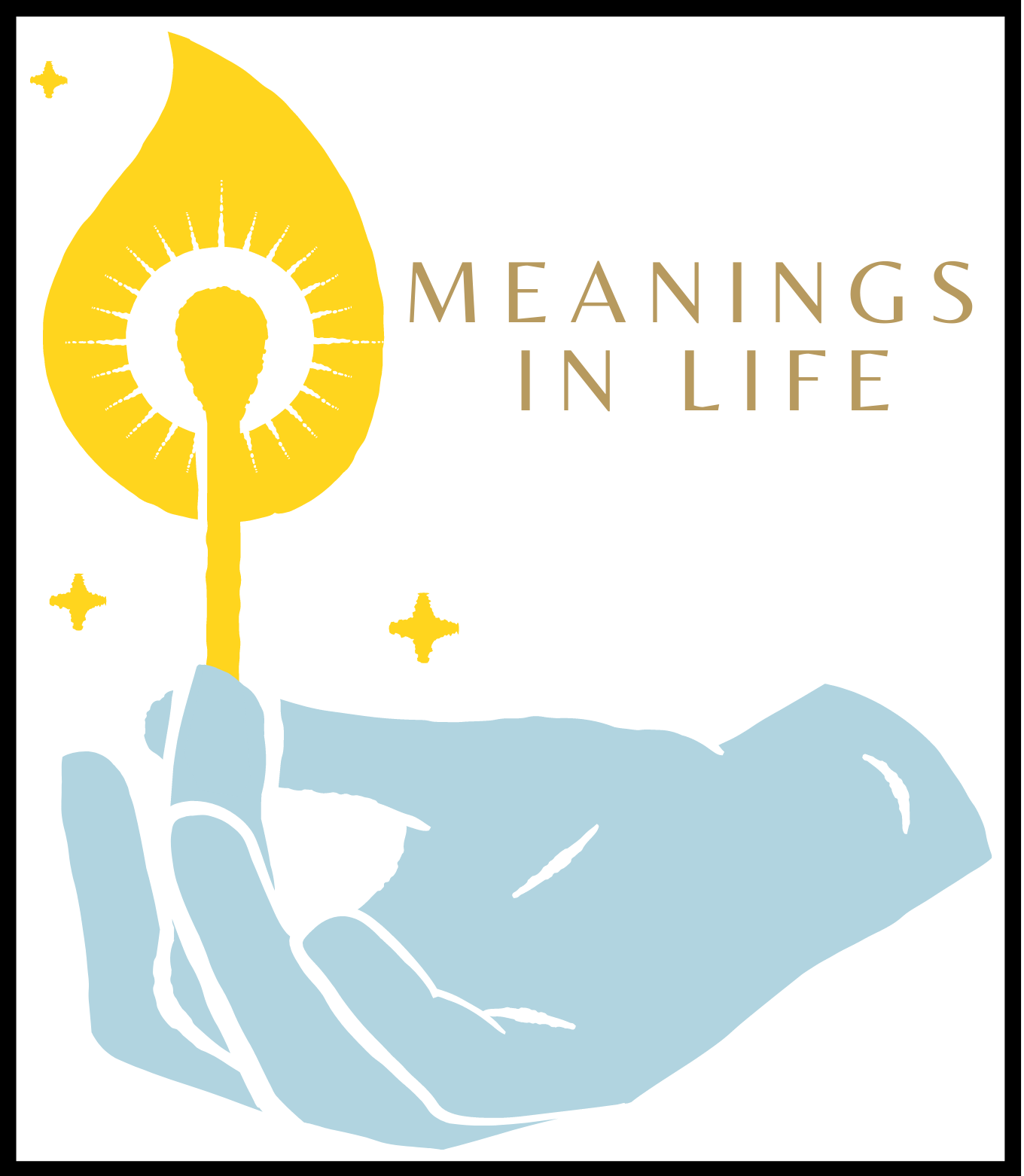Death and burial have always been intertwined with rituals and customs, giving significance to the transition from life to eternity. Among these practices lies the concept of grave clothes, a term that carries a deep spiritual meaning.
Grave clothes refer to the garments or wrappings used to clothe the deceased before their burial. However, beyond its literal interpretation lies a profound symbolism waiting to be explored.
The Definition of Grave Clothes
Grave clothes encompass more than just mere garments; they encapsulate the physical remnants left behind by those who have departed this earthly realm. These coverings are intended not only to preserve the body but also serve as an expression of respect for the deceased. In various cultures throughout history, grave clothes have taken many forms, ranging from simple shrouds to intricate attire adorned with symbols of spiritual significance.
The Importance of Understanding the Spiritual Significance
To comprehend the spiritual meaning attributed to grave clothes is to delve into a deeper understanding of our own mortality and spiritual journey. It is through this exploration that we can unlock valuable insights about life and death, transformation and renewal, and the power of resurrection within ourselves.
By deciphering the spiritual significance behind grave clothes, we gain wisdom on how to let go of past burdens that weigh us down emotionally and spiritually. This understanding empowers us with new perspectives on liberation from our old selves – shedding off layers of negativity, self-doubt, and destructive patterns that hinder personal growth.
The concept of grave clothes invites us on a transformative journey where we embrace change and renewal in every aspect of our lives. It encourages us to break free from bondage—whether it be in relationships, addictions, or limiting beliefs—and step into a life filled with purpose and freedom.
Historical Context
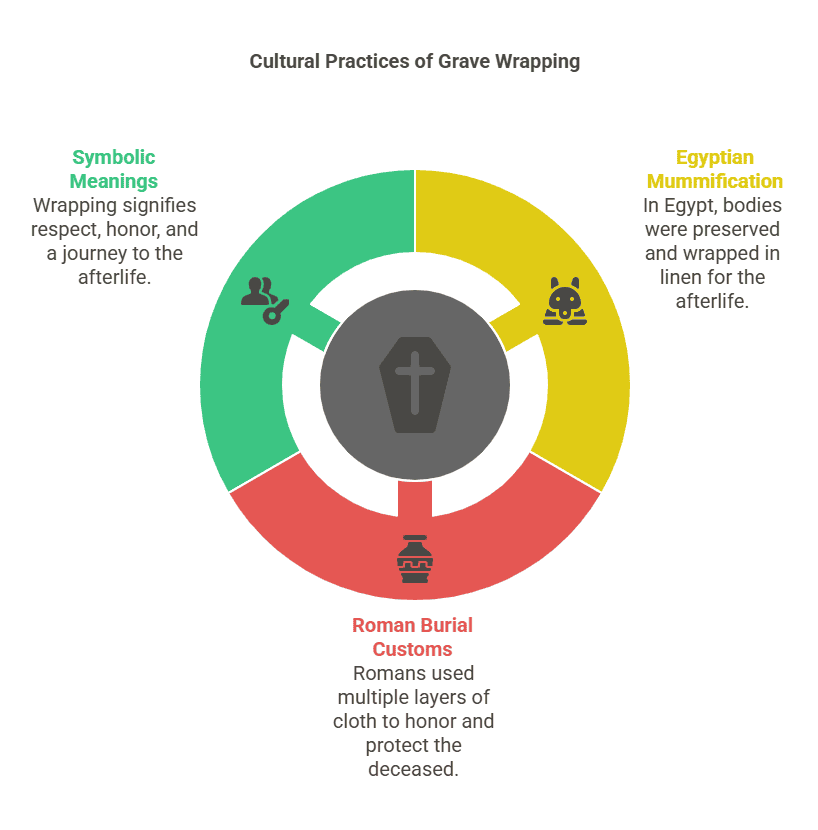
Grave Clothes in Ancient Burial Practices
In order to understand the spiritual significance of grave clothes, it is essential to delve into their historical context. The practice of wrapping the deceased in garments dates back to ancient times and can be found in various cultures around the world.
In ancient Egypt, for example, mummification was a common burial practice where the body was carefully preserved and wrapped in linen bandages. Similarly, the Romans often wrapped their deceased loved ones in multiple layers of cloth before placing them in tombs or graves.
Symbolism Associated with Wrapping the Deceased
The act of wrapping the deceased with grave clothes carried significant symbolism that went beyond mere practicality. These garments were not only a means to protect and preserve the body but also held deeper spiritual connotations. They symbolized respect and honor for the departed soul, showing that even in death, they were cared for and valued.
Additionally, wrapping the deceased represented a transition from one phase of existence to another – from earthly life to an afterlife or spiritual realm. It symbolized a journey into the unknown, where the soul would embark on its next adventure.
Moreover, tomb paintings and hieroglyphs found within ancient burial sites often depicted scenes related to death rituals and ceremonies involving grave clothes. This further underscores how significant these garments were within religious and cultural practices throughout history.
Overall, this historical context provides a solid foundation for understanding how grave clothes evolved over time as more than just practical necessities but rather as symbols infused with profound meaning and spirituality.
Biblical References
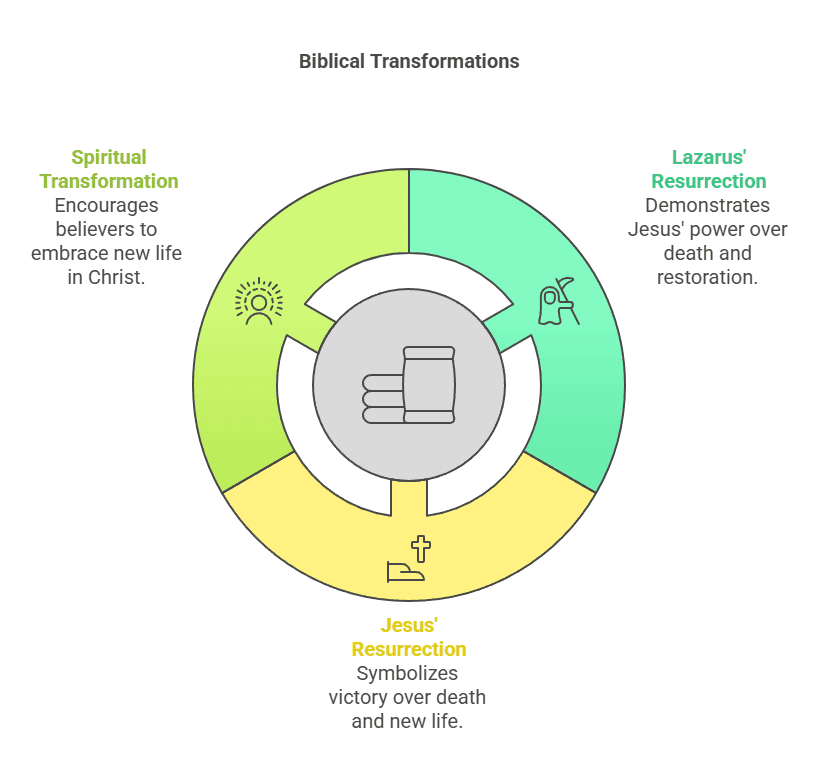
The Story of Lazarus
In the story of Lazarus, found in the Gospel of John, grave clothes play a significant role in illustrating the power and authority of Jesus. Lazarus, a friend of Jesus, falls ill and eventually dies.
When Jesus arrives at the tomb where Lazarus has been laid to rest, he commands for the stone to be rolled away. As he calls out to Lazarus with a loud voice, “Lazarus, come out!” (John 11:43), something extraordinary happens.
Despite being dead for four days and wrapped in grave clothes that bound him tightly, Lazarus emerges from the tomb alive. This miraculous event showcases not only Jesus’ ability to conquer death but also highlights the symbolism associated with leaving behind grave clothes.
Jesus’ Resurrection
Another significant biblical reference regarding grave clothes can be found in the account of Jesus’ resurrection. After his crucifixion, Jesus is buried in a tomb sealed with a large stone. On the third day, some women go to visit his tomb but find it empty; however, they encounter two angels who explain that Jesus has risen from the dead (Luke 24:1-6).
In John’s Gospel specifically (John 20:5-7), it is mentioned that when Peter and John enter the empty tomb after receiving this news, they see the linen cloths used to wrap Jesus’ body lying there. What is intriguing is that these linen cloths are separate from the burial shroud that covered his face; they are carefully folded and left behind as evidence that something extraordinary had taken place.
These biblical references draw attention to how grave clothes represent more than just burial practices or everyday garments—they symbolize profound spiritual truths about transformation and new life through Christ’s power over death itself. The story of Lazarus demonstrates how even in the face of death, Jesus can bring restoration and liberation.
Similarly, Jesus’ resurrection exemplifies the victory over death and the shedding of old ways, ultimately leading to a renewed existence. These narratives encourage believers to embrace the spiritual significance of leaving behind their own “grave clothes” – whether literal or metaphorical – and stepping into a transformed life filled with hope and purpose.
The Symbolism and Spiritual Meaning of Grave Clothes
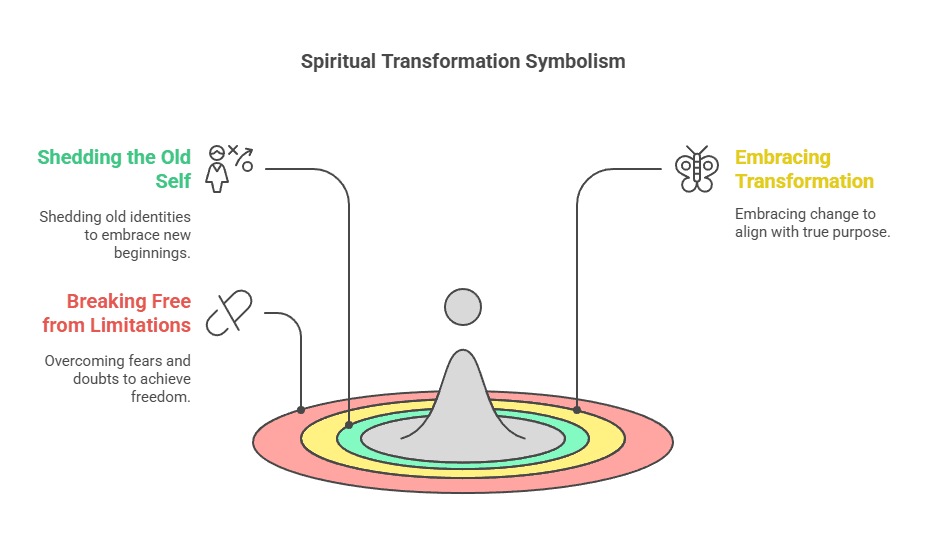
Transition from Death to New Life
When we think of grave clothes, our minds naturally gravitate towards death and the somber act of burying the deceased. However, in a spiritual context, grave clothes take on a deeper significance. They represent the transitional phase from death to new life, symbolizing the journey from darkness into light.
In this spiritual metaphor, grave clothes signify more than just physical burial garments; they encompass the old self that we must shed in order to embrace transformation. Just as a caterpillar must encase itself in a cocoon before emerging as a beautiful butterfly, so too do we need to leave behind our former selves and step into a new existence.
By discarding our grave clothes, which represent the limitations and bonds that held us captive in our old ways, we open ourselves up to experiencing radical change and growth. This transformative process is not always easy or comfortable – it requires courage and determination to break free from familiar patterns that may have kept us stagnant for far too long.
Shedding Old Self and Embracing Transformation
In order to fully grasp the spiritual meaning of grave clothes, we must be willing to shed our old self – those aspects of our identity that no longer serve us or align with our true purpose. This shedding process involves letting go of beliefs, habits, and attitudes that hinder personal growth. Imagine peeling off layer after layer of old garments until you stand bare before your Creator – vulnerable yet liberated.
By releasing these layers piece by piece, you make space for something new to emerge within you – something authentic and aligned with your deepest desires. This shedding process is not an overnight occurrence but rather an ongoing journey throughout one’s life.
It requires self-reflection, introspection, and a willingness to confront the aspects of ourselves that we may have been avoiding. It is only through this courageous self-examination that we can embrace true transformation.
Breaking Free from Bondage and Limitations
Grave clothes also symbolize the release from bondage and limitations. Just as Jesus emerged from the tomb, leaving behind his burial garments, so too are we called to break free from anything that holds us back. We often find ourselves trapped in patterns of fear, doubt, self-doubt, or even unhealthy relationships.
These chains bind us and prevent us from living a vibrant and fulfilling life. Grave clothes remind us that we have the power to break these chains and rise above our circumstances.
By recognizing the significance of grave clothes in our spiritual journey, we are reminded of our capacity for resilience and inner strength. We have the ability to step out of our comfort zones, challenge societal expectations, and push past our own limiting beliefs – thereby opening ourselves up to a life of greater possibilities.
Liberation from the Past
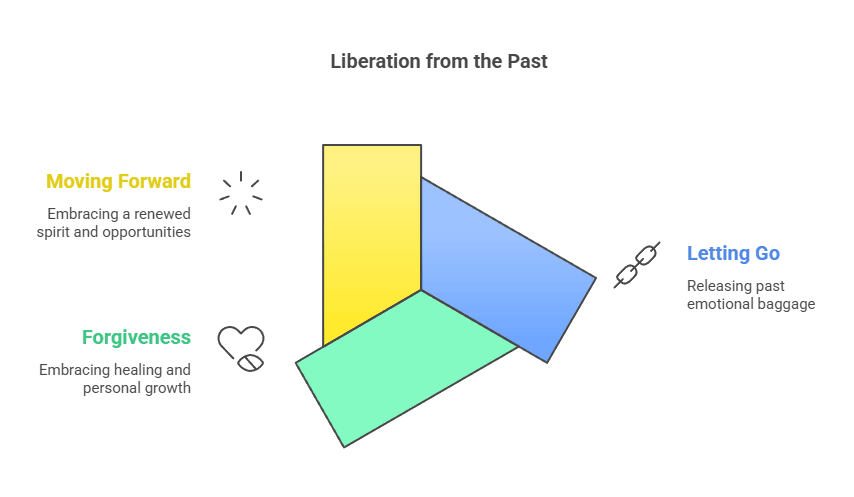
Letting go of past hurts, failures, and regrets
In the realm of spirituality, grave clothes represent more than just physical burial garments. They symbolize the emotional and spiritual baggage we carry from our past. Each one of us has experienced moments of pain, disappointment, and failure that have left deep wounds within our souls.
These wounds act as heavy chains that prevent us from moving forward in life. However, understanding the spiritual significance of grave clothes reminds us of the importance of letting go.
Letting go is not an easy task. It requires immense courage and strength to face our past head-on and release the grip it has on us.
We often find ourselves clinging to past hurts, replaying painful memories in our minds like a broken record. But by embracing the symbolism behind grave clothes, we are encouraged to take that vital step towards freedom.
Embracing forgiveness and healing
One essential aspect of liberating ourselves from our past is embracing forgiveness and seeking healing for our wounds. The process of forgiveness can be challenging but is ultimately necessary for personal growth and spiritual transformation.
By forgiving those who may have wronged us or even forgiving ourselves for past mistakes, we begin to break free from the weight that holds us down. Forgiveness doesn’t mean forgetting or condoning what happened; it means releasing the negative emotions tied to those experiences.
It allows us to detach ourselves from the pain inflicted upon us or caused by our own actions. As we shed those emotional grave clothes through forgiveness, we create space for healing to occur within our hearts and souls.
Moving forward with a renewed spirit
When we let go of past hurts, failures, and regrets while embracing forgiveness and healing, we can move forward with a renewed spirit – unburdened by what once held us back or defined us. Letting go of the grave clothes of our past enables us to step into a brighter future, free from the shackles that hindered our progress. With a renewed spirit, we gain the resilience to face life’s challenges with grace and wisdom.
We become empowered to embrace new opportunities, discover our true purpose, and cultivate meaningful relationships. The act of shedding our emotional grave clothes allows us to fully embrace the present moment and create a future filled with hope, joy, and fulfillment.
Understanding the spiritual significance of grave clothes goes beyond physical burial garments. It invites us to reflect on our own lives and consider how we can liberate ourselves from past hurts, failures, and regrets.
By embracing forgiveness and seeking healing for our wounds, we can shed the heavy chains that hold us back and move forward with a renewed spirit. Letting go is never easy but realizing the transformative power it holds opens doors to personal growth, spiritual freedom, and a brighter tomorrow.
Transformation and Renewal
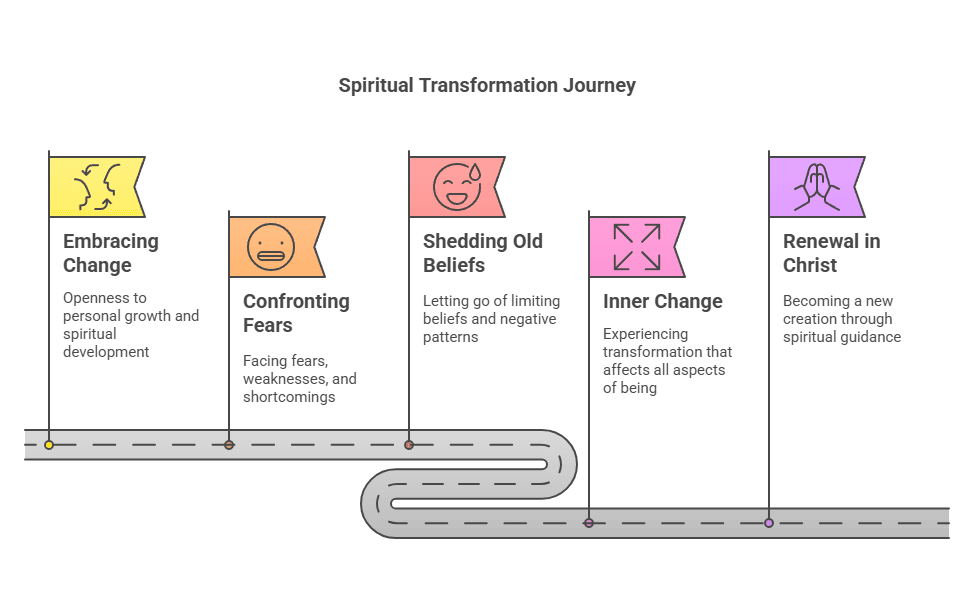
Embracing Personal Growth and Spiritual Development
Life is a journey of growth and development, both physically and spiritually. Just like a caterpillar transforms into a beautiful butterfly, we too have the potential to undergo a remarkable transformation.
In the realm of spirituality, this metamorphosis is often symbolized by grave clothes. It represents shedding our old self, with all its burdens and limitations, and embracing personal growth.
When we dare to embark on this path of personal growth and spiritual development, it requires us to be open to change. It means being courageous enough to confront our fears, weaknesses, and shortcomings head-on.
This process can be uncomfortable at times as it brings us face-to-face with our vulnerabilities. However, it is through this willingness to confront ourselves that we discover new depths within us.
Experiencing Inner Change and Renewal
As we delve deeper into our journey of personal growth and spiritual development, we begin to experience an inner change that permeates every aspect of our being. This inner change involves letting go of limiting beliefs that held us captive in the past – beliefs that whispered in our ear that we were not good enough or worthy of love. Through this process, we uncover the truth about ourselves – that deep down inside each one of us lies an infinite wellspring of potential waiting to be tapped into.
We learn to release negative patterns, habits, and toxic relationships that hindered our progress. With each layer shed like old grave clothes falling away from a resurrected soul – we emerge renewed.
Becoming a New Creation in Christ
In Christian teachings, the concept of becoming a new creation in Christ lies at the heart of spiritual transformation. It refers to being “born again” in the spirit where old things pass away, and everything becomes new (2 Corinthians 5:17).
This transformative process involves surrendering our old self and allowing Christ to dwell within us, guiding our thoughts, words, and actions. When we accept this divine invitation for renewal, we are no longer bound by the chains of our past.
We experience a profound shift in our perspective and embrace a new identity rooted in faith, love, and purpose. This transformation empowers us to live authentically, fully embracing our true selves with all our unique gifts and talents.
The path of transformation and renewal is one that requires courage and vulnerability. It is an ongoing journey of personal growth and spiritual development that allows us to shed old grave clothes that no longer serve us.
As we embrace change, experience inner transformation, and become new creations in Christ, we unlock the full potential of our being. So let us embark on this transformative journey with an open heart and a willingness to let go of what holds us back – for there is beauty beyond the grave clothes of yesterday waiting to be revealed within each one of us.
The Power of Resurrection
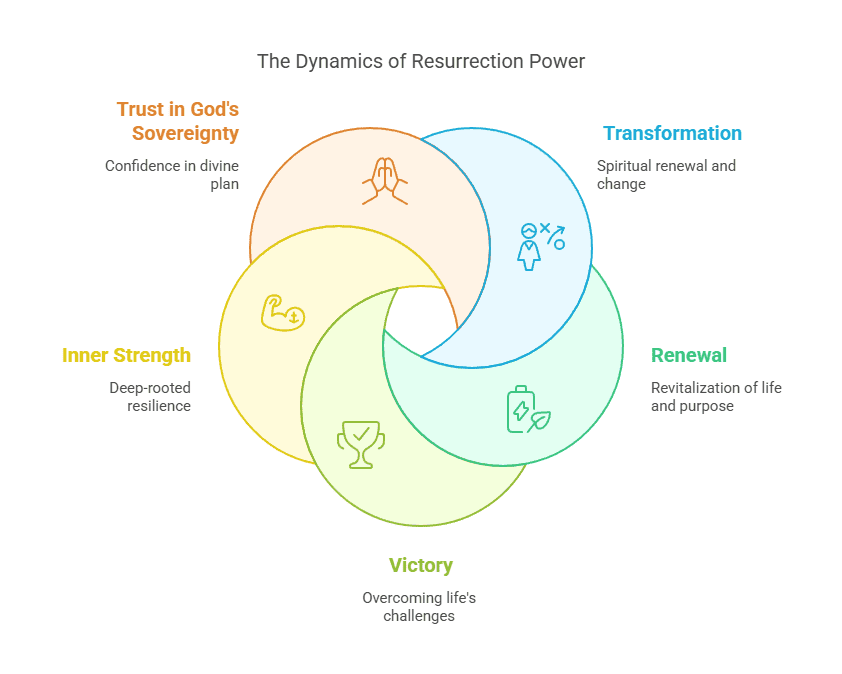
Exploring the Resurrection Power Within Believers
When we think of grave clothes, we often associate them with death and burial. However, spiritually, they can also symbolize the power of resurrection. Just as Jesus rose from the dead, believers have access to this same resurrection power within them.
It is a force that can bring about transformation, renewal, and victory in their lives. The resurrection power within believers is not just a mere concept or idea; it is a tangible reality that can be experienced.
It is the divine energy that raises us from our spiritual deadness and breathes new life into us. This power enables us to overcome sin, defeat darkness, and walk in the fullness of God’s purposes for our lives.
Walking in Victory
The resurrection power within believers empowers them to walk in victory. This means triumphing over every obstacle, challenge, or adversity they may face.
It is not a superficial victory based on external circumstances but a deep-rooted inner strength that enables believers to navigate life’s ups and downs with unwavering faith. Walking in victory does not guarantee a life free from trials or hardships; instead, it equips believers with the resilience and courage to face them head-on.
It means having an unshakable trust in God’s sovereignty and His ability to work all things for their good. By relying on the resurrection power within them, believers can boldly press forward knowing that they are conquerors through Christ who strengthens them.
Conclusion
As we delve into understanding what grave clothes mean spiritually, we discover a profound truth – grave clothes serve as far more than reminders of death; they represent new life and transformation through the power of resurrection. Recognizing the resurrection power within ourselves allows us to embrace personal growth and experience inner change.
By shedding the old, letting go of past hurts, and embracing forgiveness, we can walk in victory and renewal. This resurrection power is not limited to a single moment but continues to work in our lives, enabling us to overcome challenges and live with purpose.
So, let us be encouraged by the fact that we are not bound by our past or defined by our circumstances. Instead, we have access to the divine power that conquered death itself.
Through this power, we can rise above limitations and step into a life filled with hope, joy, and endless possibilities. Embrace the resurrection power within you and embrace a life of abundant victory!
